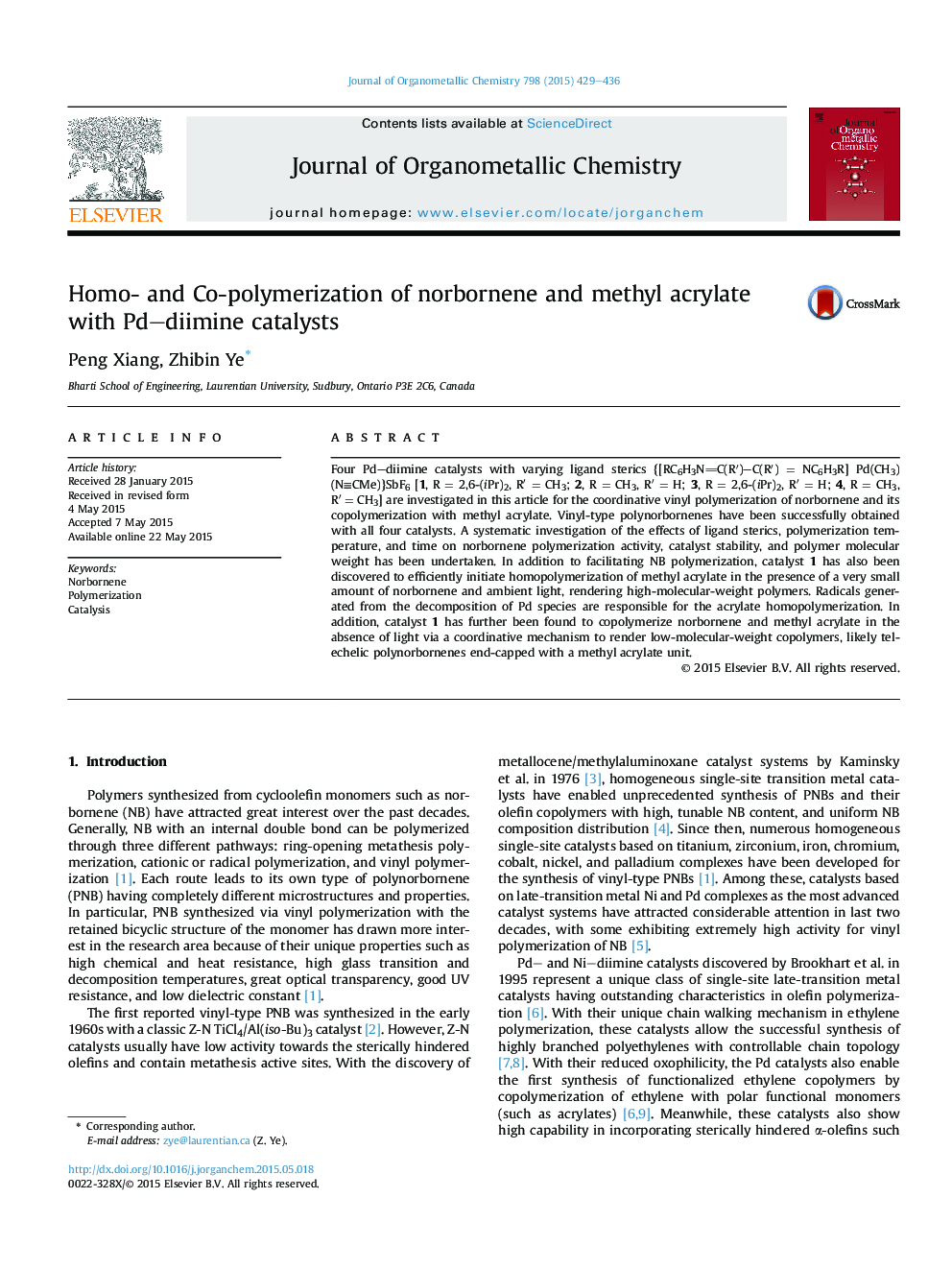| Article ID | Journal | Published Year | Pages | File Type |
|---|---|---|---|---|
| 1320676 | Journal of Organometallic Chemistry | 2015 | 8 Pages |
•Pd–diimine catalysts 1–4 were investigated for vinyl polymerization of norbornene.•Radical polymerization of methyl acrylate can be initiated with catalyst 1.•Catalyst 1 enables coordinative copolymerization of norbornene and methyl acrylate.
Four Pd–diimine catalysts with varying ligand sterics {[RC6H3NC(R′)–C(R′) = NC6H3R] Pd(CH3) (N≡CMe)}SbF6 [1, R = 2,6-(iPr)2, R′ = CH3; 2, R = CH3, R′ = H; 3, R = 2,6-(iPr)2, R′ = H; 4, R = CH3, R′ = CH3] are investigated in this article for the coordinative vinyl polymerization of norbornene and its copolymerization with methyl acrylate. Vinyl-type polynorbornenes have been successfully obtained with all four catalysts. A systematic investigation of the effects of ligand sterics, polymerization temperature, and time on norbornene polymerization activity, catalyst stability, and polymer molecular weight has been undertaken. In addition to facilitating NB polymerization, catalyst 1 has also been discovered to efficiently initiate homopolymerization of methyl acrylate in the presence of a very small amount of norbornene and ambient light, rendering high-molecular-weight polymers. Radicals generated from the decomposition of Pd species are responsible for the acrylate homopolymerization. In addition, catalyst 1 has further been found to copolymerize norbornene and methyl acrylate in the absence of light via a coordinative mechanism to render low-molecular-weight copolymers, likely telechelic polynorbornenes end-capped with a methyl acrylate unit.
Graphical abstractPd–diimine catalysts are studied for catalyzing vinyl polymerization of norbornene and copolymerization of norbornene and methyl acrylate.Figure optionsDownload full-size imageDownload as PowerPoint slide
